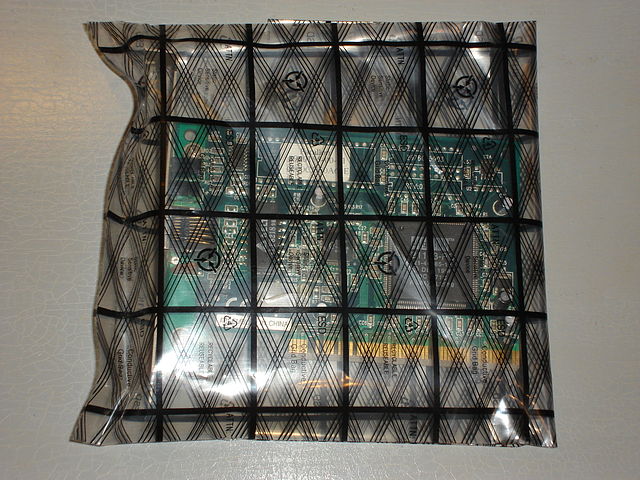Top Qs
Timeline
Chat
Perspective
Electrostatic discharge materials
Plastics that reduce static electricity From Wikipedia, the free encyclopedia
Remove ads
Electrostatic discharge materials (ESD materials) are plastics that reduce static electricity to protect against damage to electrostatic-sensitive devices (ESD) or to prevent the accidental ignition of flammable liquids or gases.
This article relies largely or entirely on a single source. (September 2014) |


Remove ads
Materials
Summarize
Perspective
The properties relevant to a material in an ESD context are:[1][2]
- Conductivity: how well it passes electricity. When dealing in thin sheets, sheet resistance is used, describing the resistance of a square of the material for a current flowing from one edge to the opposite edge. The value is depends on the thickness of the material.
- Antistatic: whether rubbing can cause dangerous electrostatic buildup (> 1000 V) on the material via triboelectric effect.
- Static-dissipation: whether any existing static charge can be gradually removed by conducting through the material.
- Shielding: whether the electromagnetic field due to an electrostatic discharge from the outside results in a non-dangerous amount of voltage on the inside.
- Isolation: whether the two sides of the material are electrically isolated enough, so that any discharge that happens across the material is weak enough.
Remove ads
See also
References
Further reading
External links
Wikiwand - on
Seamless Wikipedia browsing. On steroids.
Remove ads
